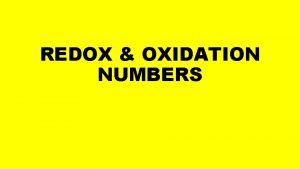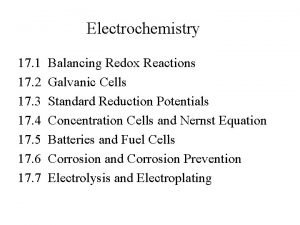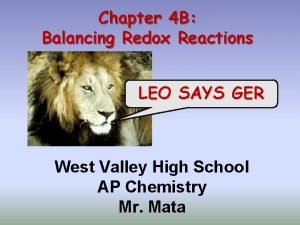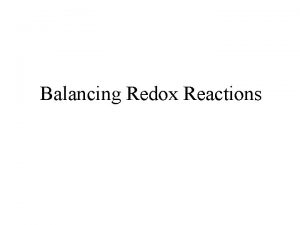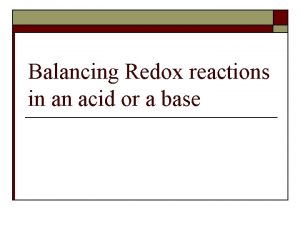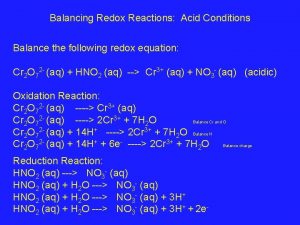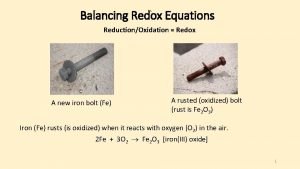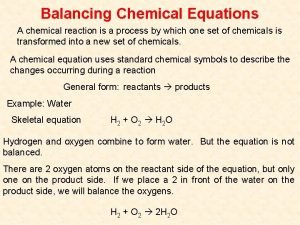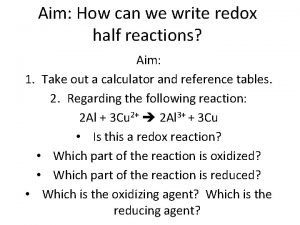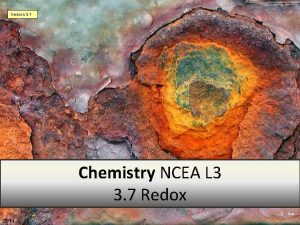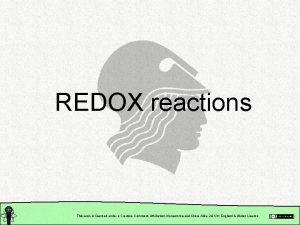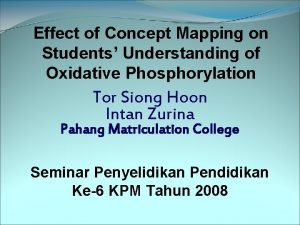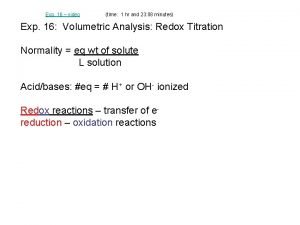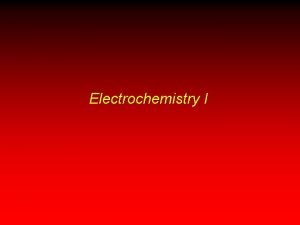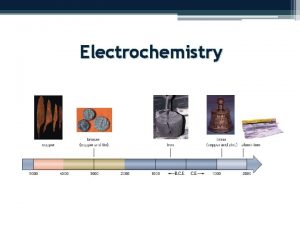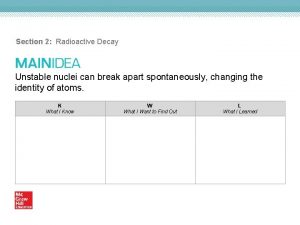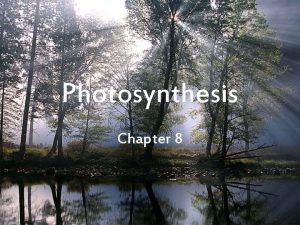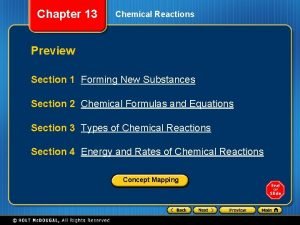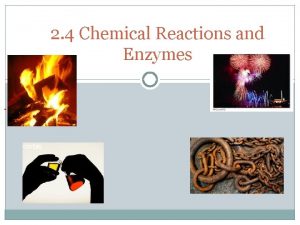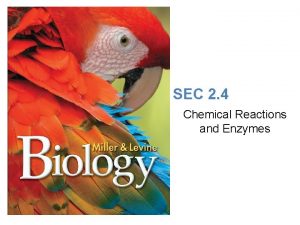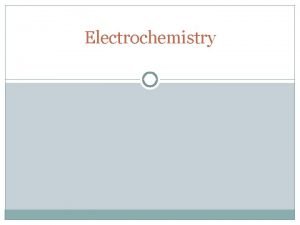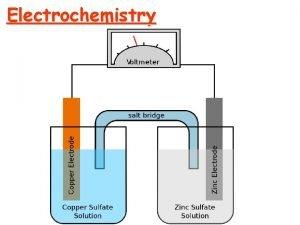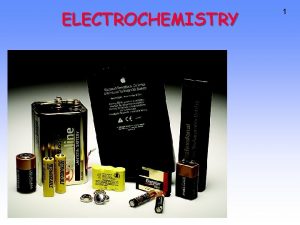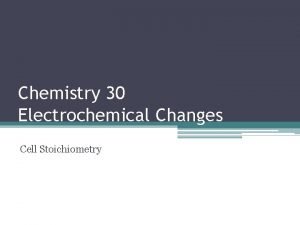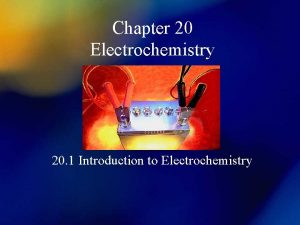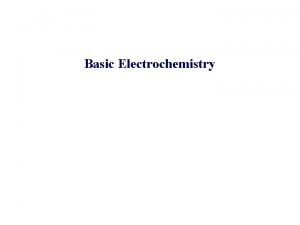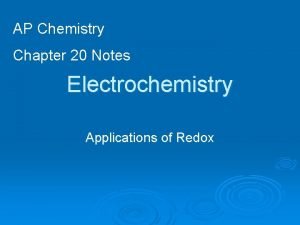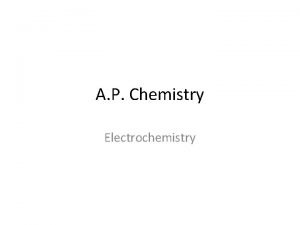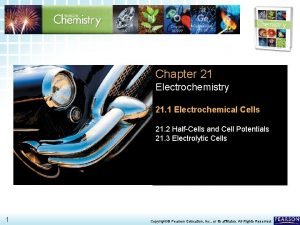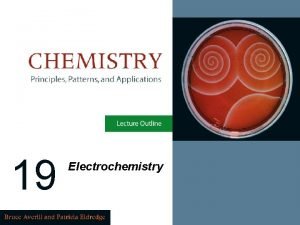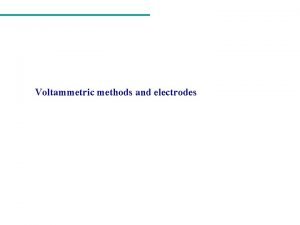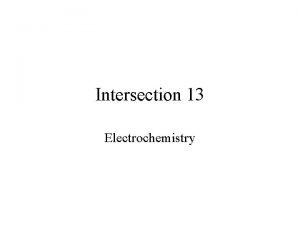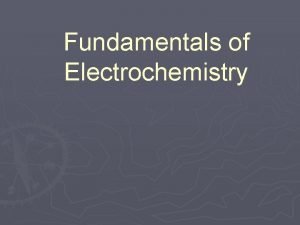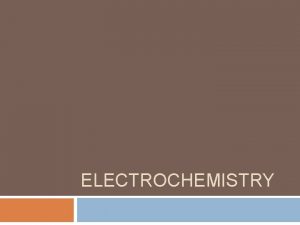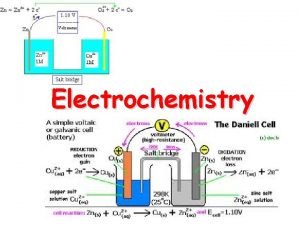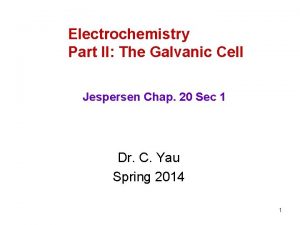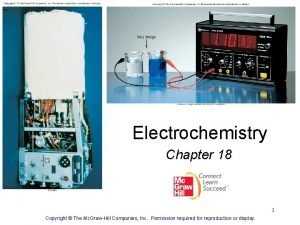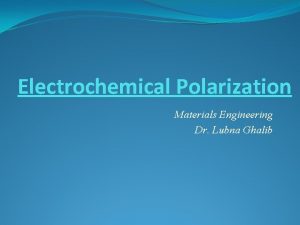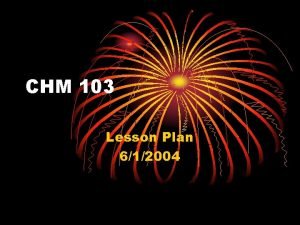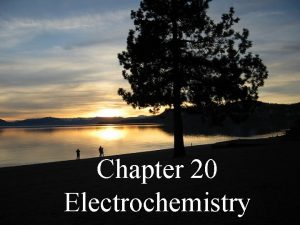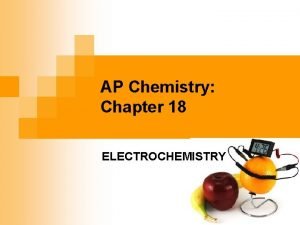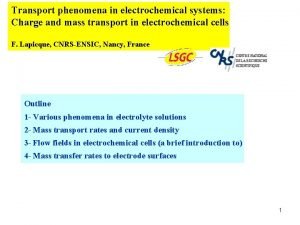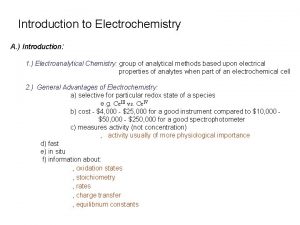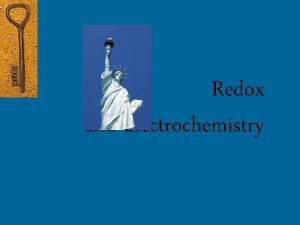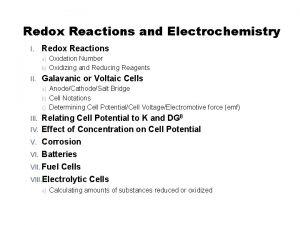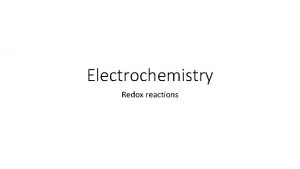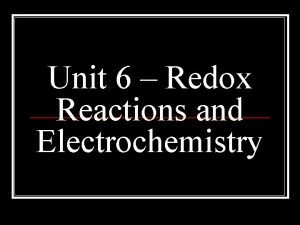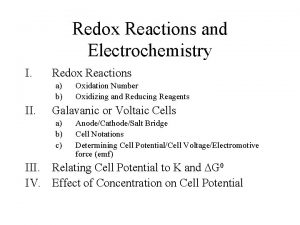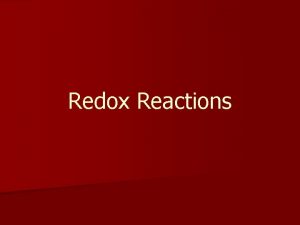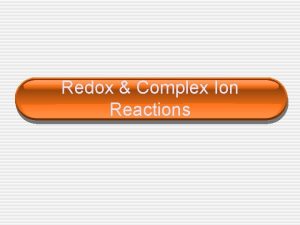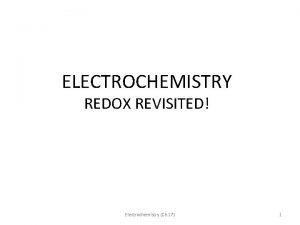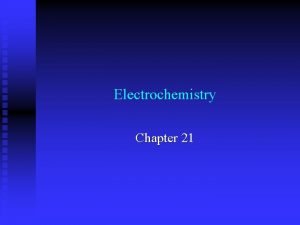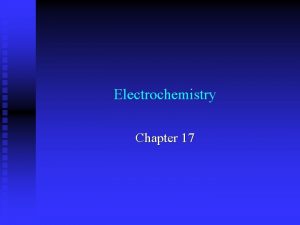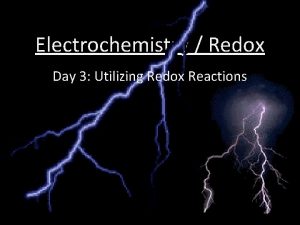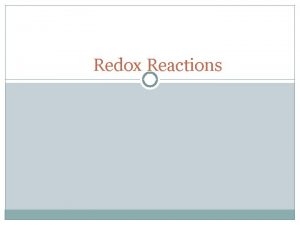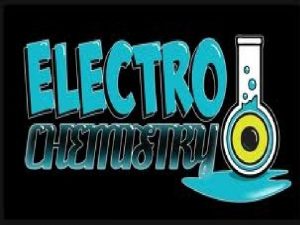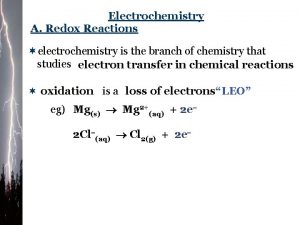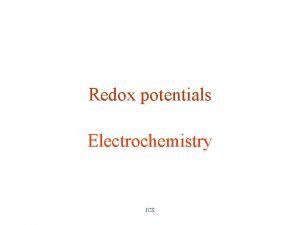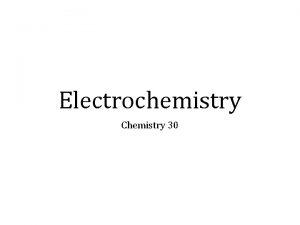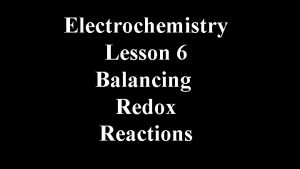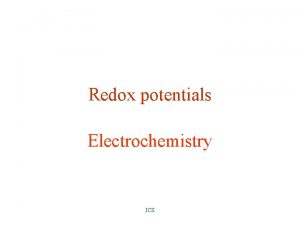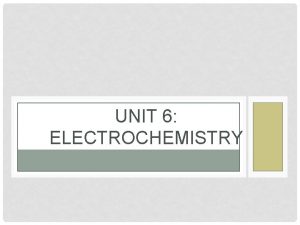Electrochemistry Redox Reactions Day 1 Section 9 1





































































- Slides: 69

Electrochemistry

Redox Reactions

Day 1 Section 9. 1 Today’s Objectives: 1. Define oxidation and reduction operationally (historically) and theoretically 2. Define half-reaction. Section 9. 1 (pg. 600)

Reduction – Oxidation Reactions “REDOX” • Is a chemical reaction in which electrons are transferred • Must have both reduction and oxidation happening for the reaction to occur ▫ REDUCTION – a process in which electrons are gained by an entity ▫ OXIDATION – a process in which electrons are lost by an entity ▫ How can you remember this? “LEO the lion says GER” LEO = Losing Electrons = Oxidation GER = Gaining Electrons = Reduction Other memory devices: OIL RIG (Oxidation Is Losing electrons, Reduction Is Gaining electrons) REGOLE (Reduction Electron Gain Oxidation Loss of Electrons)

Review – NET IONIC EQUATIONS • Remember from grade 11 Chemisrty • Lets write a net ionic equation for the reaction ▫ Silver nitrate and copper metal

Reduction – Oxidation Reactions “REDOX” • Examples of Redox Reactions: Ø Formation, decomposition, combustion, single replacement, cellular respiration, photosynthesis, (NOT double replacement)

An Introduction to Redox • Imagine that a reaction is a combination of two parts called half-reactions. ▫ A half reaction represents what is happening to one reactant, it tells one part of the story. ▫ Another half-reaction is required to complete the description of the reaction. • Example: When metal is placed into hydrochloric acid solution, gas bubbles form as the zinc slowly disappears. Zn(s) + 2 HCl(aq) Zn. Cl 2(aq) + H 2(g • What happens to the zinc? To the HCl(aq)? Look at the half-reactions. Zn(s) Zn 2+ (aq) + 2 e 2 H+(aq) + 2 e- H 2 (g) Notice that both of these half-reactions are balanced by mass (same number of atoms/ions of each element on both sides) and by charge (same total charge on both sides) ▫ A half reaction is a balanced chemical equation that represents either a loss or gain of electrons by a substance

An Introduction to Redox • Imagine that a reaction is a combination of two parts called half-reactions. ▫ A half reaction represents what is happening to one reactant, it tells one part of the story. ▫ Another half-reaction is required to complete the description of the reaction. • Example: When metal is placed into hydrochloric acid solution, gas bubbles form as the zinc slowly disappears. Zn(s) + 2 HCl(aq) Zn. Cl 2(aq) + H 2(g • What happens to the zinc? To the HCl(aq)? Look at the half-reactions. Zn(s) Zn 2+ (aq) + 2 e. REDUCTION - entity gains electrons 2 H+(aq) + 2 e- H 2 (g) ▫ Where is oxidation occurring? ? (LEO) ▫ Where is reduction occurring? ? (GER) OXIDATION - entity loses electrons

An Introduction to Redox • Example: When a piece of copper is placed into a beaker of silver nitrate, the following changes occur. Cu(s) + Ag. NO 3(aq) Cu(NO 3)2(aq) + Ag(s) • Write the balanced half-reaction equations: ▫ To show that the number of electrons gained equals the number of electrons lost in two half-equations, it may be necessary to multiply one or both half-reaction equations by a coefficient to balance the electrons. I. e. Ag half reaction must be multiplied by 2 • Where is Oxidation occurring? • Where is Reduction occurring? Cu(s) Cu 2+ (aq) + 2 e- OXIDATION 2 [Ag+(aq) + e- Ag (s)] REDUCTION

An Introduction to Redox OXIDATION Cu(s) Cu 2+ (aq) + 2 e- REDUCTION 2 [Ag+(aq) + e- Ag (s)] • Now add the half-reactions and cancel the terms that appear on both sides of the equation to obtain the net-ionic equation 2 Ag+(aq) + 2 e- + Cu(s) 2 Ag(s) + Cu 2+ (aq) + 2 e 2 Ag+(aq)+ Cu(s) 2 Ag(s) + Cu 2+ (aq) ▫ Silver ions are reduced to silver metal by reaction with copper metal. Simultaneously, copper metal is oxidized to copper(II) ions by reaction with silver ions.

An Introduction to Redox ▫ Silver ions are reduced to silver metal by reaction with copper metal. Simultaneously, copper metal is oxidized to copper(II) ions by reaction with silver ions.

An Introduction to Redox ▫ There are two methods for developing net ionic equations: 1) ½ reaction method we just learned OR 2) Using the net-ionic equation method from Grade 11 Cu(s) + 2 Ag. NO 3(aq) Cu(NO 3)2(aq) + 2 Ag(s) (dissociate high solubility and ionic compounds) NON-IONIC Cu(s) + 2 Ag + (aq) + 2 NO 3 - (aq) Cu 2+(aq)+ 2 NO 3 -(aq) + 2 Ag(s) (cancel spectator ions) TOTAL IONIC 2 Ag+(aq)+ Cu(s) 2 Ag(s) + Cu 2+ (aq) (Do NET-IONIC we get the same net ionic reaction? ? YES!)

Summary “Electron Transfer Theory” • A redox reaction is a chemical reaction in which electrons are transferred between entities • The total number of electrons gained in the reduction equals the total number of electrons lost in the oxidation • Reduction is a process in which electrons are gained by an entity • Oxidation is a process in which electrons are lost by an entity • Both reduction and oxidation are represented by balanced halfreaction equations.

REDOX Reactions…. so far Reduction • Historically, the formation of a metal from its “ore” (or oxide) ▫ I. e. nickel(II) oxide is reduced by hydrogen gas to nickel metal Ni. O(s) + H 2(g) Ni(s) + H 2 O(l) Ni +2 Nio Oxidation • Historically, reactions with oxygen ▫ I. e. iron reacts with oxygen to produce iron(III) oxide 4 Fe(s) + O 2(g) Fe 2 O 3(s) Fe 0 Fe+3 • A gain of electrons occurs (so the entity becomes more negative) • A loss of electrons occurs (so the entity becomes more positive) • Electrons are shown as the reactant in the half-reaction • Electrons are shown as the product in the half-reaction

Homework • Read section 9. 1 • Page 601 #1 -4

Day 2 Section 9. 1 (cont. ) Today’s Objectives: 1. Define oxidation number 2. Write and balance equations for redox reactions in acidic, basic, and neutral solutions, by assigning oxidation numbers 3. Identify electron transfer, oxidizing agents, and reducing agents in redox reactions that occur everyday in both living and non-living systems. Section 13. 3 (pg. 568 -582)

Oxidation States • An oxidation state is defined as the apparent net electric charge an atom would have if the electron pairs in a covalent bond belonged entirely to the most electronegative atom. • An oxidation number is a positive or negative number corresponding to the oxidation state of the atom in a compound. (These are NOT charges! +2 vs 2+) • Example: In water, which is the most electronegative atom, H or O? ▫ Oxygen, so we act as if the oxygen owns both electrons in the electron pair. Each oxygen atom has 8 p+ and 8 e-. But if the oxygen atom gets to count the two hydrogen electrons (red dots) in the two shared pairs, as its own, then it has 8 p+ but 10 e-, leaving an apparent net charge of -2 Each hydrogen atom has 1 p+, but with no additional electron (since oxygen has already counted it), that leaves hydrogen with an apparent net charge of +1

Oxidation States Tip: • The sum of the oxidation numbers for a neutral compound = 0 • The sum of the oxidation numbers for a polyatomic ion = ion charge ** This method only works if there is only one unknown after referring to the above table

Oxidation States • Example: What is the oxidation number of carbon in methane CH 4? ▫ After referring to Table 1, we assign an oxidation number of +1 to hydrogen ▫ So now we have some simple math… ▫ Since a methane molecule is electrically neutral, then the oxidation number of the one carbon atom and the four hydrogen atoms 4(+1) must equal zero. x + 4(+1) = 0 So the oxidation number of carbon is = -4 How do we write this?

Oxidation States • Example: What is the oxidation number of manganese in a permanganate ion, Mn. O 4 - ? ▫ After referring to Table 1, we assign an oxidation number of -2 to oxygen ▫ Since a permanganate ion has a charge of 1 -, then the oxidation number of the one manganese atom and the four oxygen atoms 4(-2) must equal -1. x + 4(-2) = -8 -1 = -1 So the oxidation number of manganese is = -7 • Example: What is the oxidation number of sulfur in sodium sulfate? ▫ We know the oxidation numbers of both Na and O, and solve algebraically 2(+1) + x + 4(-2) = 0 2 + x + -8 = 0 So the oxidation number of sulfur is +6

Redox in Living Organisms • The ability of carbon to take on different oxidation states is essential to life on Earth. Photosynthesis involves a series of reduction reactions in which the oxidation number of carbon changes from +4 in carbon dioxide to an average of 0 in sugars such as glucose. • The smell of a skunk is caused by a thiol compound (R-SH). To deodorize a pet sprayed by a skunk, you need to convert the smelly thiol to an odourless compound. Hydrogen peroxide in a basic solution acts as an oxidizing agent to change thiol to a disulfide compound (RS-SR), which is odourless.

Determining Oxidation Numbers Summary 1. Assign common oxidation numbers 2. The total of the oxidation numbers of atoms in a molecule or ion equals the value of the net electric charge of the molecule or ion. a) The sum of the oxidation numbers for a compound is zero. b) The sum of the oxidation numbers for a polyatomic ion equals the charge of the ion. 3. Any unknown oxidation number is determined algebraically from the sum of the known oxidation numbers and the net charge on the entity.

Oxidation Numbers and Redox • Although the concept of oxidation states is somewhat arbitrary, because it is based on assigned charges, it is self-consistent and allows predictions of electron transfer. ▫ Chemists believe that if the oxidation number of an atom or ion changes during a chemical reaction, then an electron transfer (oxidation-reduction reaction) occurs. ▫ Based on oxidation numbers, If the oxidation numbers do not change = no transfer of e-’s = not a redox rxn An increase in the oxidation number = oxidation A decrease in the oxidation number = reduction

REDOX Reactions … the end Reduction • Historically, the formation of a metal from its “ore” (or oxide) ▫ I. e. nickel(II) oxide is reduced by hydrogen gas to nickel metal Ni. O(s) + H 2(g) Ni(s) + H 2 O(l) Ni +2 Nio Oxidation • Historically, reactions with oxygen ▫ I. e. iron reacts with oxygen to produce iron(III) oxide 4 Fe(s) + O 2(g) Fe 2 O 3(s) Fe 0 Fe+3 • A gain of electrons occurs (so the entity becomes more negative) • A loss of electrons occurs (so the entity becomes more positive) • Electrons are shown as the reactant in the half-reaction • Electrons are shown as the product in the half-reaction • A species undergoing reduction will be responsible for the oxidation of another entity – and is therefore classified as an oxidizing agent (OA) • A species undergoing oxidation will be responsible for the reduction of another entity – and is therefore classified as an reducing agent (RA) • Decrease in oxidation number • Increase in oxidation number

Oxidation Numbers and Redox • Example: Identify the oxidation and reduction in the reaction of zinc metal with hydrochloric acid. ▫ First write the chemical equation (as it is not provided) ▫ Determine all of the oxidation numbers ▫ Now look for the oxidation number of an atom/ion that increases as a result of the reaction and label the change as oxidation. There must also be an atom/ion whose oxidation number decreases. Label this change as reduction.

Oxidation Numbers and Redox • Example: When natural gas burns in a furnace, carbon dioxide and water form. Identify oxidation and reduction in this reaction. ▫ First write the chemical equation (as it is not provided) ▫ Determine all of the oxidation numbers ▫ Now look for the oxidation number of an atom/ion that increases as a result of the reaction and label the change as oxidation. There must also be an atom/ion whose oxidation number decreases. Label this change as reduction.

Homework • Homework: • Read section 9. 1 • Page 604 #1 -4 • Page 606 #1 -3

Day 3 Section 9. 2 Today’s Objectives: 1. Review oxidation number 2. Write and balance equations for redox reactions in acidic, basic, and neutral solutions, by assigning oxidation numbers Section 13. 3 (pg. 568 -582)

Balancing Redox Equations using Oxidation Numbers 1. Assign oxidation numbers and identify the atoms/ions whose oxidation numbers change 2. Using the change in oxidation numbers, write the number of electrons transferred per atom. 3. Using the chemical formulas, determine the number of electrons transferred per reactant. (Use formula subscripts to do this) 4. Calculate the simplest whole number coefficients for the reactants that will balance the total number of electrons transferred. Balance the reactants and products. 5. Balance the O atoms using H 2 O(l), and then balance the H atoms using H+(aq)

Balancing Redox Equations using Oxidation Numbers #1 Example: When hydrogen sulfide is burned in the presence of oxygen, it is converted to sulfur dioxide and water vapour. Use oxidation numbers to balance this equation. H 2 S(g) + O 2(g) SO 2(g) + H 2 O(g) 1. Assign oxidation numbers to all atoms/ions and look for the numbers that change. Highlight these. ▫ Notice that a sulfur atom is oxidized from -2 to +4. This is a change of 6 meaning 6 e- have been transferred. ▫ An oxygen atom is reduced from 0 to -2. This is a change of 2 or 2 e- transferred. ▫ Because the substances are molecules, not atoms, we need to specify the change in the number of e-’s per molecule 2. The next step is to determine the simplest whole numbers that will balance the number of electrons transferred for each reactant. The numbers become the coefficients of the reactants 1. The coefficients for the products can be obtained by balancing the atoms whose oxidation numbers have changed and then any other atoms.

Balancing Redox Equations using Oxidation Numbers #2 Example: Chlorate ions and iodine react in an acidic solution to produce chloride ions and iodate ions. Balance the equation for this reactions. Cl. O 3 -(aq) + I 2(aq) Cl-(aq) + IO 3 -(aq) 1. Assign oxidation numbers to all atoms/ions and look for the numbers that change. Highlight these. Remember to record the change in the number of electrons per atom and per molecule or polyatomic ion. 1. The next step is to determine the simplest whole numbers that will balance the number of electrons transferred for each reactant. The numbers become the coefficients of the reactants. The coefficients for the products can be obtained by balancing the atoms whose oxidation numbers have changed and then any other atoms. 2. Although Cl and I atoms are balanced, oxygen is not. Add H 2 O(l) molecules to balance the O atoms. 3. Add H+(aq) to balance the hydrogen. The redox equation should now be completely balanced. Check your work by checking the total numbers of each atom/ion on each side and checking the total electric charge, which should also be balanced.

Balancing Redox Equations using Oxidation Numbers #3 Example: Methanol reacts with permanganate ions in a basic solution. The main reactants and products are shown below. Balance the equation for this reaction. • Assign oxidation numbers to all atoms/ions and look for the numbers that change. Highlight these. • Remember to record the change in the number of electrons per atom and per molecule or polyatomic ion. • Determine the simplest whole numbers that will balance the number of electrons transferred for each reactant. The numbers become the coefficients of the reactants. The coefficients for the products can be obtained by balancing the atoms whose oxidation numbers have changed and then any other atoms. • Add H 2 O(l) to balance the oxygen, add H+(aq) to balance the hydrogen.

Balancing Redox Equations using Oxidation Numbers #4 Example: Household bleach contains sodium hypochlorite. Some of the hypochlorite ions disproportionate (react with themselves) to produce chloride ions and chlorate ions. Write the balanced redox equation for the disproportionation. For disproportionation reactions, start with two identical entities on the reactant side and follow the usual procedure for balancing equations.

Balancing Redox Equations using Oxidation Numbers #5 • Example: A person suspected of being intoxicated blows into this device and the alcohol in the person’s breath reacts with an acidic dichromate ion solution to produce acetic acid (ethanoic acid) and aqueous chromium(III) ions. Balance the equation for this reaction. • Remember to balance the C and Cr first, then add H 2 O(l) to balance O, H+(aq) to balance H and then stop because this is an acidic solution

Homework • Read section 9. 2 • Page 613 #1 -6

Day 4 Section 9. 2 Today’s Objectives: 1. Write and balance equations for redox reactions in acidic, and neutral solutions, by using half-reaction equations, developing simple half-reaction equations, and assigning oxidation numbers Section 13. 2 (pg. 568 -582)

Redox Reactions: Writing Half. Reactions Rules for Writing and Balancing Half-Reactions 1. Write an unbalanced ½ reaction showing formulas for reactants and products 2. Balance all atoms except H and O 3. Balance O by adding H 2 O(l) 4. Balance H by adding H+(aq) 5. Balance the charge by adding e- and cancel anything that is the same on both sides

Practicing Half-Reactions • Copper metal can be oxidized in a solution to form copper(I) oxide. What is the half-reaction for this process? 1. Balance all atoms except H and O Cu(s) Cu 2 O(s) 2. Balance oxygen by adding water 2 Cu(s) +H 2 O(l) Cu 2 O(s) 3. Balance hydrogen by adding H+(aq) 2 Cu(s) +H 2 O(l) Cu 2 O(s) + 2 H+(aq) 4. Balance charge by adding electrons 2 Cu(s) +H 2 O(l) Cu 2 O(s) + 2 H+(aq) + 2 e-

Practicing Half-Reactions • Chlorine is converted to perchlorate ions in an acidic solution. Write the half-reaction equation. Is this half-reaction an oxidation or reduction? Cl 2(g) Cl. O 4 -(aq) 1. Balance all atoms except H and O Cl 2(g) 2 Cl. O 4 -(aq) 1. Balance oxygen by adding water Cl 2(g) + 8 H 2 O(l) 2 Cl. O 4 -(aq) 1. Balance hydrogen by adding H+(aq) Cl 2(g) + 8 H 2 O(l) 2 Cl. O 4 -(aq) + 16 H+(aq) 2. Balance charge by adding electrons Cl 2(g) + 8 H 2 O(l) 2 Cl. O 4 -(aq) + 16 H+(aq) + 14 e- OXIDATION

Predicting Redox Reactions by Constructing Half-Reactions SUMMARY 1. Use the information provided to start two half-reaction equations. ▫ Using the rules we just learned about half-reactions 2. Balance each half-reaction equation. 3. Multiply each half-reaction by simple whole numbers to balance electrons lost and gained. 4. Add the two half-reaction equations, cancelling the electrons and anything else that is exactly the same on both sides of the equation.

Predicting Redox Reactions by Constructing Half Reactions • Example: A person suspected of being intoxicated blows into this device and the alcohol in the person’s breath reacts with an acidic dichromate ion solution to produce acetic acid (ethanoic acid) and aqueous chromium(III) ions. Predict the balanced redox reaction equation. • Create a skeleton equation from the information provided: • Separate the entities into the start of two half-reaction equations • Now use the steps you learned for balancing half reactions • Now, balance the electrons lost and gained, and add the half reactions. Cancel the electrons and anything else that is exactly the same on both sides of the equation.

Homework • Read section 9. 2 • Page 616 #1, 2

Day 5 Section 9. 3 Today’s Objectives: 1. Review oxidation and reduction and half-reaction. 2. Define oxidizing agent, reducing agent, and relate to half-reaction 3. Predict spontaneous redox reaction by spontaneity rule. 4. Build a relative redox table from experimental data.

Redox Terms ▫ Review: “LEO the lion says GER” Loss of electrons = entity being oxidized Gain of electrons = entity being reduced BUT…. Chemists don’t say “the reactant being oxidized” or “the reactant being reduced” Rather, they use the terms OXIDIZING AGENT (OA) and REDUCING AGENT (RA) OXIDIZING AGENT: causes oxidation by removing (gaining) electrons from another substance in a redox reaction, so is therefore REDUCED REDUCING AGENT: causes reduction by donating (losing) electrons to another substance in a redox reaction, so is therefore OXIDIZED What does this mean? Let’s revisit our first example when zinc and hydrochloric acid reacted. Which reactant was reduced? Which was oxidized? So…. Which is the Oxidizing Agent (OA)? Which is the Reducing Agent (RA) LEO = Oxidized Zn(s) Zn 2+ (aq) + 2 e- Reducing Agent GER = Reduced 2 H+(aq) + 2 e- H 2 (g) Oxidizing Agent

Redox Terms ▫ Silver ions were reduced to silver metal by reaction with copper metal. Simultaneously, copper metal was oxidized to copper(II) ions by reaction with silver ions. ▫ If Ag+(aq) is reduced it is the: OXIDIZING AGENT (OA) ▫ If Cu(s) is oxidized it is the: REDUCING AGENT (RA) It is important to note that oxidation and reduction are processes, and oxidizing agents and reducing agents are substances.

REDOX Reactions … so far Reduction Oxidation • A gain of electrons occurs (so the entity becomes more negative) • A loss of electrons occurs (so the entity becomes more positive) • Electrons are shown as the reactant in the half-reaction • Electrons are shown as the product in the half-reaction • A species undergoing reduction will be responsible for the oxidation of another entity – and is therefore classified as an oxidizing agent (OA) • A species undergoing oxidation will be responsible for the reduction of another entity – and is therefore classified as an reducing agent (RA)

Redox Terms • Summary so far: ▫ The substance that is reduced (gains electrons) is also known as the oxidizing agent ▫ The substance that is oxidized (loses electrons) is also knows as the reducing agent • Question: If a substance is a very strong oxidizing agent, what does this mean in terms of electrons? The substance has a very strong attraction for electrons. • Question: If a substance is a very strong reducing agent, what does this mean in terms of electrons? The substance has a weak attraction for its electrons, which are easily removed

Redox Table’s • A reaction is considered spontaneous if it occurs on its own • A reduction ½ reaction table is useful in predicting the spontaneity of a reaction (see page 729 -730) ▫ Reduction Tables show reduction ½ reactions in the forward direction, therefore all the reactants will be oxidizing agents ▫ Remember the reactions can be read both directions so really you have both oxidation and reduction half reactions Ag+(aq) + 1 e- Ag(s) SOA Cu 2+(aq) + 2 e- Cu(s) Zn 2+(aq) + 2 e- Zn(s) Mg 2+(aq) + 2 e- Mg(s) SRA

Predicting Spontaneity • A reaction is considered spontaneous if it occurs on its own • A reduction ½ reaction table is useful in predicting the spontaneity of a reaction

Building Redox Tables #1 • Consider the following experimental information and add half-reactions to the redox table you have created Hg 2+(aq) Cu 2+(aq) Ag+(aq) Au 3+(aq) Hg(s) ✗ ✗ ✗ ✓ Cu(s) ✓ ✗ ✓ ✓ Ag(s) ✓ ✗ ✗ ✓ Au(s) ✗ ✗ SOA Au 3+(aq) Hg 2+(aq) Ag+(aq) Cu 2+(aq) Zn 2+(aq) Mg 2+(aq) + + + 3 e- Au(s) 2 e- Hg(s) 1 e- Ag(s) 2 e- Cu(s) 2 e- Zn(s) 2 e- Mg(s) SRA

Building Redox Tables #1 • Check page 729 -730 of your textbook. Does our ranking order match up with theirs? SOA Au 3+(aq) Hg 2+(aq) Ag+(aq) Cu 2+(aq) Zn 2+(aq) Mg 2+(aq) + + + 3 e- Au(s) 2 e- Hg(s) 1 e- Ag(s) 2 e- Cu(s) 2 e- Zn(s) 2 e- Mg(s) SRA ▫ YES! Because of the spontaneity rule! A reaction will be spontaneous if on a redox table: OA above RA = Spontaneous Reaction RA below OA = Non-spontaneous Reaction

Building Redox Tables #2 • Example 2: Use the following information to create a table of reduction ½ reactions OA RA Pd(s) 3 Co 2+ (aq) + 2 In(s) 2 In 3+ (aq) + 3 Co(s) OA Cu 2+ RA Cu 2+ (aq) + Co(s) Co 2+ (aq) + Cu(s) OA Co 2+ RA In(s) Cu 2+ (aq) + Pd(s) no reaction SOA Pd 2+(aq) Cu 2+(aq) Co 2+(aq) In 3+(aq) + + Co(s) 2 e- 3 e- Pd(s) Cu(s) Co(s) In(s) SRA

Building Redox Tables #3 • Example 3: Use the following information to create a table of reduction ½ reactions OA RA 2 A 3+ (aq) + 3 D(s) 3 D 2+ (aq) + 2 A(s) OA A 3+ RA D 2+(aq) G + (aq) + D(s) no reaction OA E(s) RA 3 D 2+ (aq) + 2 E(s) 3 D(s) + 2 E 3+(aq) G+ RA OA G +(aq) + E(s) no reaction SOA D(s) A 3+(aq) D 2+(aq) E 3+(aq) G+(aq) + + 3 e- 2 e- 3 e- 1 e- A(s) D(s) E(s) G(s) SRA

Building Redox Tables • So far we have been using examples where the oxidizing agents are metal ions and the reducing agents are metal atoms. What else could gain or lose electrons? ▫ Non-metal atoms I. e. Cl 2(g) + 2 e- 2 Cl-(aq) (Cl 2(g) could act as a Reducing Agent) ▫ Non-metal ions I. e. 2 Br- (aq) Br 2(l) + 2 e- (2 Br-(aq) could act as an Oxidizing Agent) • Redox Table Trend ▫ OA’s tend to be metal ions and non-metal atoms ▫ RA’s tend to be metal atoms and non-metal ions • Also, are there any entities that could act as both OA or RA? ▫ Multivalent metals

Practice • Try pg 622 #1 -4

Day 5: Today’s Objectives: 1. Define oxidizing agent, reducing agent, half-reaction, and disproportionation 2. Compare the relative strengths of oxidizing and reducing agents from empirical data. 3. Predict the spontaneity of a redox reaction based on a redox table, and compare predictions to experimental results.

Predicting Redox Reactions • Now that you know what redox reactions are, you will be responsible for determining if a reaction will occur (is spontaneous) and if so, what the reaction equation will be. How do we do this? 1. The first step is to determine all the entities that are present. ▫ Helpful reference: Table 6 pg. 575 ▫ Remember: In solutions, molecules and ions behave independently of each other. ▫ Example: When a solution of potassium permanganate is slowly poured through acidified iron(II) sulfate solution. ▫ Does a redox reaction occur and what is the reaction equation?

Predicting Redox Reactions 2. The second step is to determine all possible OA’s and RA’s ▫ This is a crucial step!! Things to watch out for: Combinations (i. e. Mn. O 4 -(aq) is an oxidizing agent only in an acidic solution) To indicate this draw an arc between the permanganate and hydrogen ion Species that can act as both OA and RA Any lower charge multivalent metal i. e. Fe 2+, Cu+, Sn 2+, Cr 2+ Water (H 2 O(l)) Label both possibilities in your list

• Before we move on, let’s practice Step 1 and 2 ▫ Pg. 575 #25

• Pg. 575 #25

• Pg. 575 #25

Predicting Redox Reactions 3. The third step is to identify the SOA and SRA using the data booklet SOA SRA 4. The fourth step is to show the ½ reactions (from the redox table) and balance ▫ SOA equation straight from table. SRA equation read from right to left ▫ Are these equations balanced? Do the number of electrons lost = electrons gained ▫ If not, multiply one or both equations by a number then add the balanced equations

Predicting Redox Reactions 5. The last step is to predict the spontaneity. Does the net ionic equation represent a spontaneous or non-spontaneous redox reaction? If the SOA above Spontaneous SRA? ? If the SRA below SOA Nonspontaneous THIS METHOD IS CALLED THE FIVESTEP METHOD

Predicting Redox Reactions #2 Could copper pipe be used to transport a hydrochloric acid solution? 1. List all entities 2. Identify all possible OA’s and RA’s 3. Identify the SOA and SRA 4. Show ½ reactions and balance 5. Predict spontaneity Since the reaction is nonspontaneous, it should be possible to use a copper pipe to carry hydrochloric acid

Disproportionation • The redox reactions we have covered so far have one reactant (OA) which removes electrons from a second reactant (RA) if a spontaneous reaction is to occur. Although the OA and RA are usually different entities, this is not a requirement. • A reaction is which a species is both oxidized and reduced is called disproportionation (aka autoxidation or self oxidation-reduction) ▫ Occurs when a substance can act as either as oxidizing or reducing agent ▫ Example: Will a spontaneous reaction occur as a result of an electron transfer from one iron(II) ion to another iron (II) ion? ▫ No! Using the redox table and spontaneity rule, we see that iron(II) as an oxidizing agent is below iron(II) as a reducing agent, so the reaction is nonspontaneous

Disproportionation • Example #2: Will a spontaneous reaction occur as a result of an electron transfer from one copper(I) ion to another copper (I) ion? Cu+(aq) + 1 e- Cu(s) See pg. 578 Ex. 2 for more another example Cu+(aq) Cu 2+(aq) + 1 e 2 Cu+(aq) Cu 2+(aq) + Cu(s) ▫ YES! Using the redox table and spontaneity rule, we see that copper(I) as an oxidizing agent is above copper(I) as a reducing agent. Therefore, an aqueous solution of copper(I) ions will spontaneously, but slowly, disproportionate into copper(II) ions and copper metal.

Homework • • Finish pg. 575 #25 (started in class) Pg. 579 #26, 30 Pg. 582 Q 4 -7, 9, 10, 13 **When reading 13. 2 leave out section on balancing using half reactions (579 -581) we will revisit this. What is coming up? ▫ Review Electrochemistry so far… ▫ Introduce Redox Stoichiometry ▫ Redox and Spontaneity Quiz (Monday) Includes key terms, half-reactions, using the spontaneity rule, redox tables, predicting redox reactions (using the redox table), and five step method.

Predicting Redox Reactions by Constructing Half Reactions • Example: Permanganate ions and oxalate ions react in a basic solution to produce carbon dioxide and manganese (IV) oxide • Create a skeleton equation from the information provided: • Separate the entities into the start of two half-reaction equations • Now use the steps you learned for writing half reactions • Now, balance the electrons lost and gained, and add the half reactions. Cancel the electrons and anything else that is exactly the same on both sides of the equation. • Because this is a basic solution, the last step is add OH-(aq) to both sides to equal the number of H+(aq) present. Then combine H+(aq) and OH-(aq) on the same side to form H 2 O(l). Cancel equal amounts of H 2 O(l) from both sides

Homework • Half-Reaction Method of Balancing WS • Extra Practice: • Pg. 581 #31 • Pg. 582 #13, 15
 Redox examples
Redox examples Day 1 day 2 day 3 day 4
Day 1 day 2 day 3 day 4 Section 2 classifying chemical reactions
Section 2 classifying chemical reactions Section 2 classifying chemical reactions worksheet answers
Section 2 classifying chemical reactions worksheet answers Types of reactions
Types of reactions Types of chemical reactions redox
Types of chemical reactions redox Oil rig redox reactions
Oil rig redox reactions Balancing redox reactions in basic solution
Balancing redox reactions in basic solution Oxidation reduction reactions
Oxidation reduction reactions Cathode and anode half reactions
Cathode and anode half reactions Example of redox reaction
Example of redox reaction Chapter 19 redox reactions study guide answers
Chapter 19 redox reactions study guide answers Redox reaction leo ger
Redox reaction leo ger Electrochemistry balancing equations
Electrochemistry balancing equations Balancing redox reactions in acid
Balancing redox reactions in acid Balance redox reactions
Balance redox reactions Rules for balancing redox reactions
Rules for balancing redox reactions How to balance an equation step by step
How to balance an equation step by step Balancing redox reactions calculator
Balancing redox reactions calculator Balancing oxidation reduction reactions
Balancing oxidation reduction reactions Redox reactions ncea level 2
Redox reactions ncea level 2 Writing half equations chemsheets answers
Writing half equations chemsheets answers How redox reactions work
How redox reactions work Concept map about oxidative phosphorylation
Concept map about oxidative phosphorylation Khan academy galvanic cells
Khan academy galvanic cells What are spectator ions
What are spectator ions Balance redox
Balance redox Predicting redox reactions
Predicting redox reactions Day 1 day 2 day 817
Day 1 day 2 day 817 Chemistry unit 5 reactions balancing reactions worksheet
Chemistry unit 5 reactions balancing reactions worksheet Nuclear decays and reactions section 2
Nuclear decays and reactions section 2 Combination reaction equation
Combination reaction equation Chemical equations and reactions chapter 8 review
Chemical equations and reactions chapter 8 review Chapter 8 section 1 chemical equations and reactions
Chapter 8 section 1 chemical equations and reactions Section 1 chemical changes
Section 1 chemical changes Section 2-4 chemical reactions and enzymes
Section 2-4 chemical reactions and enzymes Section 8-2 photosynthesis
Section 8-2 photosynthesis Section 8-3 the reactions of photosynthesis
Section 8-3 the reactions of photosynthesis Chemistry in biology section 2 chemical reactions
Chemistry in biology section 2 chemical reactions Chapter 6 chemistry in biology
Chapter 6 chemistry in biology Section 2 chemical reactions answer key
Section 2 chemical reactions answer key Section 2-4 chemical reactions and enzymes
Section 2-4 chemical reactions and enzymes Section 2-4 chemical reactions and enzymes
Section 2-4 chemical reactions and enzymes Faradays constant
Faradays constant Transport no in chemistry
Transport no in chemistry Junction potential
Junction potential Ap chemistry chapter 18 electrochemistry test
Ap chemistry chapter 18 electrochemistry test What is e in nernst equation
What is e in nernst equation What is electrochemistry
What is electrochemistry Electrochemistry balancing equations
Electrochemistry balancing equations Electrochemistry stoichiometry
Electrochemistry stoichiometry Intro to electrochemistry
Intro to electrochemistry Aee cd20f
Aee cd20f Ap chem electrochemistry review
Ap chem electrochemistry review Electrochemistry ap chemistry
Electrochemistry ap chemistry Cell chapter 21
Cell chapter 21 Ecell formula
Ecell formula Electroanalytical methods
Electroanalytical methods Electrochemistry eds
Electrochemistry eds Fundamentals of electrochemistry
Fundamentals of electrochemistry What is electrochemistry
What is electrochemistry What is electrochemistry in chemistry
What is electrochemistry in chemistry Line notation electrochemistry
Line notation electrochemistry Diagonal rule electrochemistry
Diagonal rule electrochemistry What is polarization in electrochemistry
What is polarization in electrochemistry Electrochemistry lesson
Electrochemistry lesson Branches of electrochemistry
Branches of electrochemistry Chemistry
Chemistry Mass transport electrochemistry
Mass transport electrochemistry Introduction of electrochemistry
Introduction of electrochemistry






